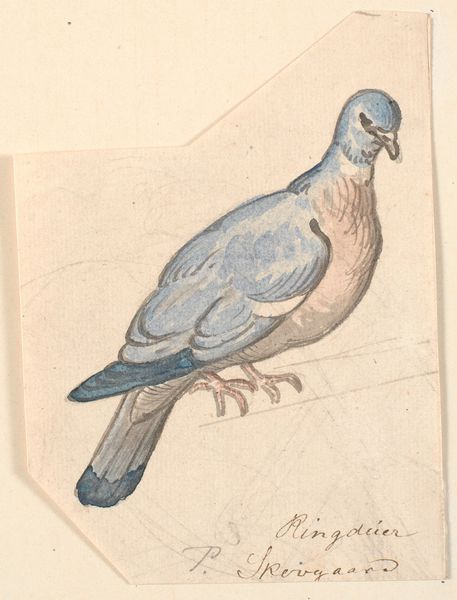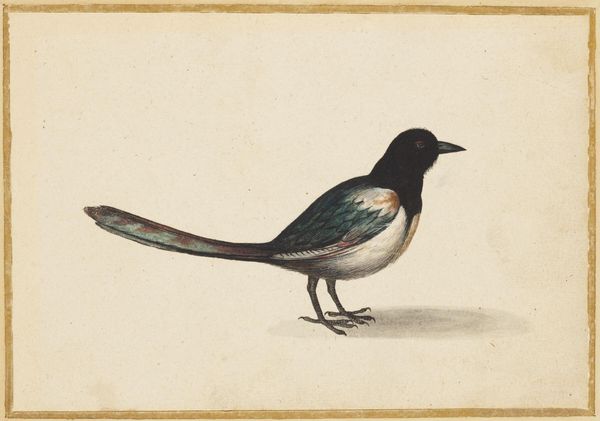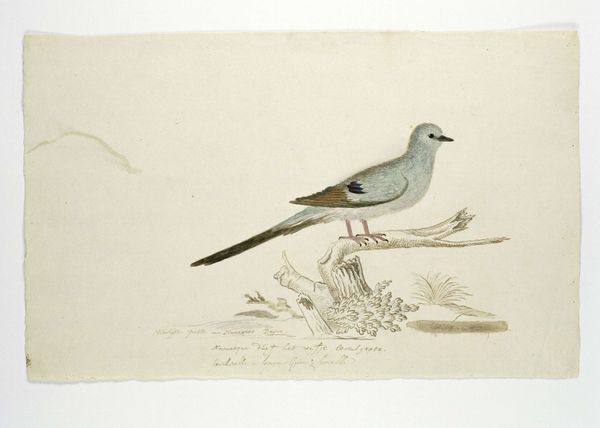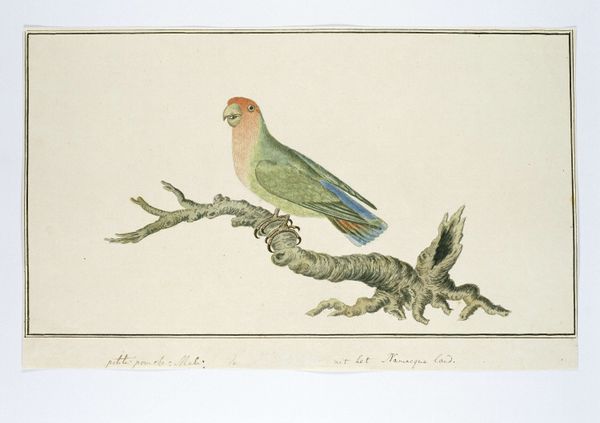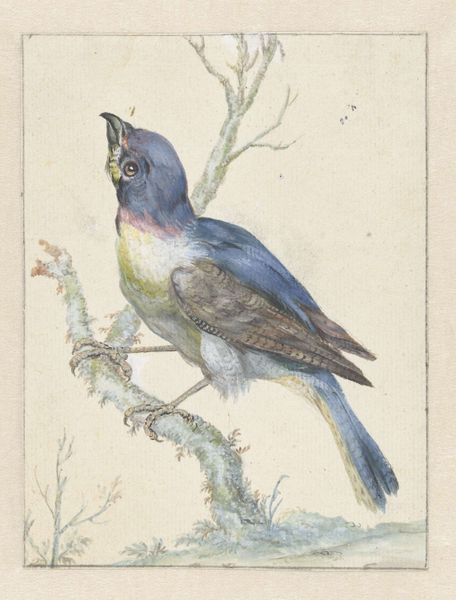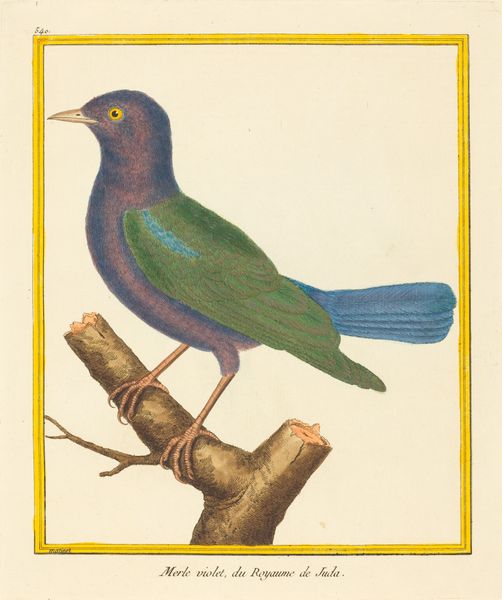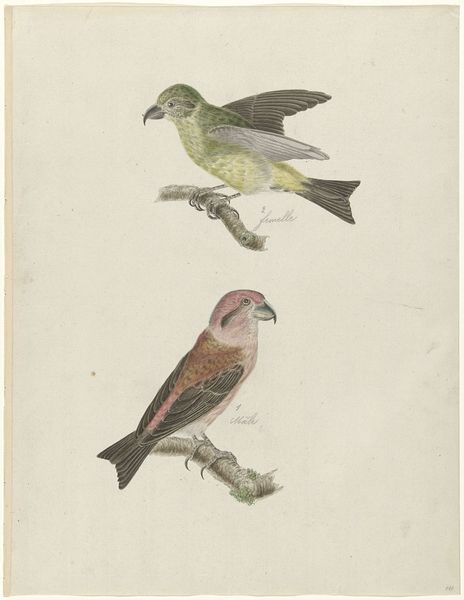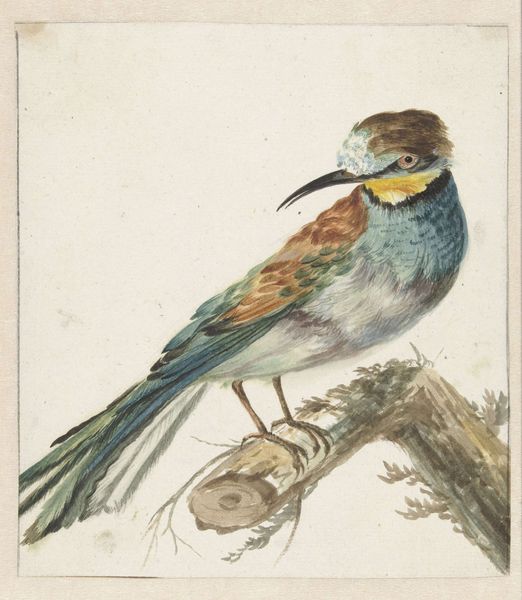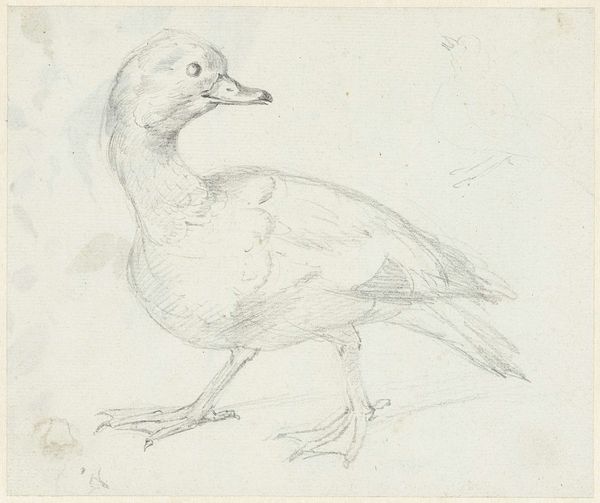
drawing, watercolor, pencil
#
portrait
#
drawing
#
watercolor
#
coloured pencil
#
romanticism
#
pencil
#
botanical art
#
watercolor
Dimensions: height 192 mm, width 251 mm
Copyright: Rijks Museum: Open Domain
Editor: This lovely watercolour and pencil drawing, "Duif, zittend op een plankje," by Jean Bernard, was created in 1802. There’s a quiet simplicity to it; the bird seems so self-contained. What can you tell me about it? Curator: It’s tempting to simply appreciate its aesthetic value, but let's consider the broader context. What might a seemingly simple depiction of a pigeon signify in 1802? Think about how birds have historically been used as symbols of freedom, peace, or even messages, particularly homing pigeons. Does the domestic nature of the pigeon alter how we approach themes of liberty, especially given the sociopolitical climate of the early 19th century? Editor: That’s a great point, it shifts my perspective. Pigeons can be free or domestic; I suppose it can go either way. The French Revolution was still fresh in everyone's minds at this time – could it be a statement on the revolution's impact, perhaps commenting on the loss of innocence or freedom through the metaphor of the domesticated pigeon? Curator: Exactly! We can also consider how gender and class dynamics may influence how animals have been perceived and portrayed across centuries of art. In what ways do these dynamics appear to inform Bernard's work here? Editor: I see that. I never would have considered any of that, honestly. I’ve always thought of Romanticism as being all about emotion and the individual, and it's not so straightforward as that. Thanks! Curator: The "personal is political" held weight back then too. Engaging with art like this demands we constantly negotiate both subjective experience and power. It’s important to avoid reading our contemporary understanding into past practices and assumptions of the historical period. We’re in conversation, bridging past and present!
Comments
No comments
Be the first to comment and join the conversation on the ultimate creative platform.
